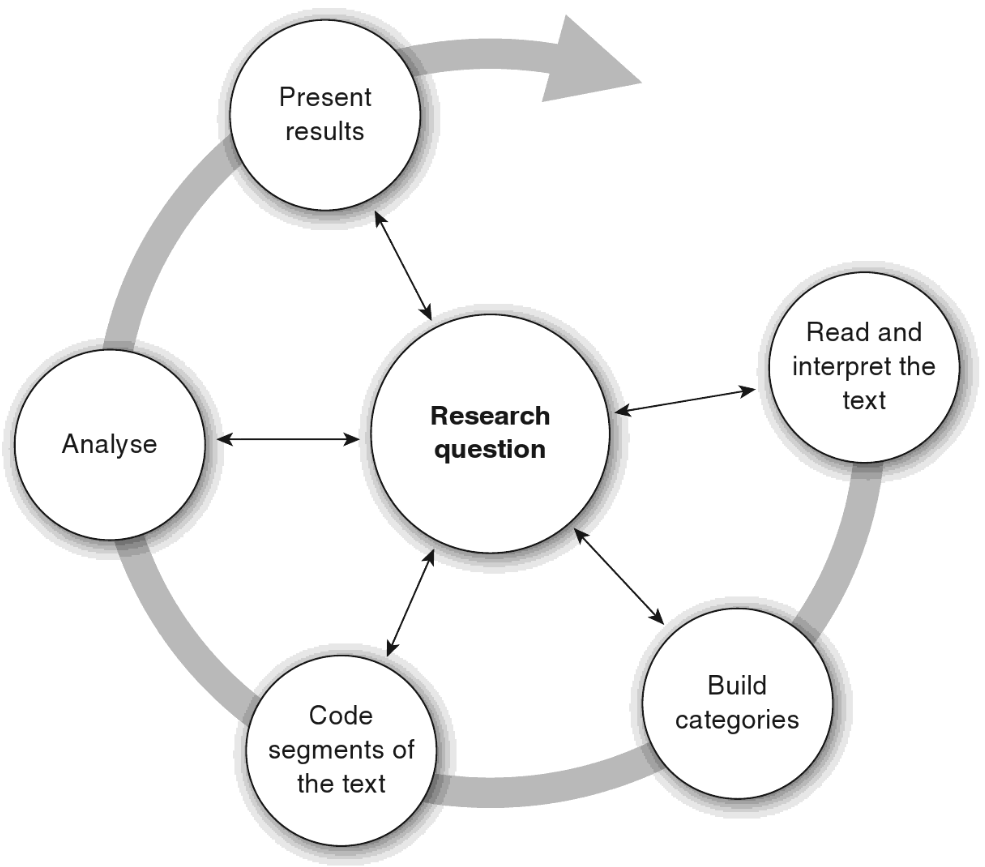Welcome to the MAXQDA Getting Started Guide! As no one likes to read long introductions and manuals, we tried to make this one as short as possible to help you get started as quickly as possible. The guide will enable you to start your analysis and make your own experiences with MAXQDA. We will focus on the actual usage of the program, and not on the presentation of different analysis and research methods. If you want to find out more about those, we have provided a list of useful publi-cations in the chapter “Further literature”. As you may know, there is an endless number of different qualitative methods. But most of them can be conducted with the help of MAXQDA as they all follow the same basic structure as pictured in this illustration.
The vast majority of qualitative analysis methods work with categories. These can either be created from within the data or based on prior knowledge of the data, existing theories, or recent research results. Categories are often also named codes or keywords, but whatever the name, they all have the function to organize and systematize the data, often even working as analytical codes. Analytical codes are the result of an analytical process that exceeds simply determining a topic, and this is what we refer to as Codes in this guide. Coding data can take a long time, but don’t worry: there are many different ways to make use of QDA (qualitative data analysis) software. It’s not always necessary to code your data in order to analyze it with MAXQDA; you can also use it simply for organizing your da-ta, or searching for words and word combinations.

